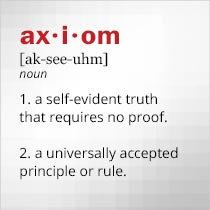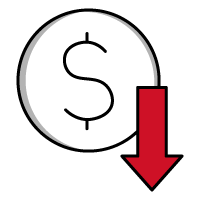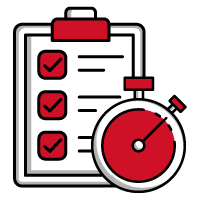Get a Charge out of Testing EV Batteries
August 01, 2023
 |
Roads are slowly filling with electric vehicles (EVs) and hybrid electric vehicles (HEVs), helping to clean the Earth’s “carbon footprint” by minimizing emissions from internal combustion engines. The growing number of affordable EVs and HEVs is coming in large part because of the availability of reliable rechargeable battery packs, such as lithium-ion (Li-ion) batteries capable of storing enough power to support practical driving ranges under electric power for EVs and HEVs. Manufacturers of battery packs for EVs and HEVs have worked closely with designers and manufacturers of EVs and HEVs to achieve efficient rechargeable fuel cells with generous energy capacity and long operating lifetimes. Having access to suitable test equipment has played a major role in the development of high-density DC electric power packs capable of adding many miles to the ranges of modern EVs and HeVs.
For characterizing any kind of rechargeable vehicle battery or energy storage device and analyzing the charging stations and electronic devices used to recharge EV/HeV batteries, the test equipment must be capable of behaving like a power supply during a charging cycle and an electronic load during a discharge cycle. Battery packs for EVs are energy storage systems comprised of many small cells. Each section of the battery pack contributes electric power to the whole and all the sections are designed for high power and high reliability. EV battery packs are quite large, typically weighing about 1200 lbs. for a Tesla EV. They are designed for long lifetimes, typically 10 years and 100,000 miles, although they may be usable for 20 years or longer.
EV battery packs do degrade in performance over time, eventually losing the capability to hold the original amount of energy during a recharge cycle. Testing an EV battery for charge capacity is one way to understand its capabilities at that time and to project its operating lifetime to reach a given charge capacity, such as 80% which will also mean a less-distant driving range for a “fully” charged EV battery.
Testing a large EV battery pack requires handling electricity at precise voltage and current levels. Several battery technologies are used in EVs and HeVs, with lithium-ion (Li-ion) batteries the most popular for EVs and nickel-metal-hydride batteries often used in HeVs. Research and development on newer battery types is ongoing, for more compact battery packs with increased power densities and storage capacities. EV batteries are designed for long operating lifetimes and many charge/discharge cycles and will typically provide close to 100% charge capacity for several years before they begin to lose charge capacity.
EV battery capacity testing can be performed according to a manufacturer’s guidelines or per regulations set by technical organizations, such as the Institute of Electrical and Electronics Engineers (IEEE) and North American Electric Reliability Corporation (NERC). An EV/battery manufacturer establishes an EV battery’s power limits by means of acceptance testing, which sets a reference for 100% charge capacity.
Loss of EV battery energy capacity can be learned through testing during the charge/discharge cycles of the battery. Testers for EV/HeV batteries can be as basic as bidirectional power supplies or as elaborate as multifunction test systems. EV battery charge cycles are performed according to three levels of EV charging: L1, L2, and L3. Each applies energy at different levels and rates. During L1 charging, which takes place from a 120-VAC outlet usually at the home of an EV owner, charge times are long and energy levels are low. Very little driving range can be added to an EV’s battery during a long time. During an L2 charge cycle, from a higher-power 240-V port, more energy and a greater driving range can be added during a still lengthy charge cycle. L3 charge cycles are performed at the highest power levels (such as 480 VDC) during the shortest charge cycles, usually at public charging stations. Test equipment for EV batteries must meet or exceed the voltage, current, and power levels absorbed and dissipated by a battery during its charge and discharge cycles, respectively.
Checking for Charge
For example, the NH Research (NHR) 9300-100 is a complete measurement system for automated charge/discharge cycling of EV batteries and other energy storage components. The rack-mount tester competes in size and weight with the EV battery packs it tests but provides the user with extensive measurement capability. It has many safety features, including over-voltage, over-current, over-power, and over-temperature protection, and incorporates a digital chart recorder for data capture.
Well suited for design and manufacturing tests in automotive, aviation, industrial, and marine markets, the system is capable of constant power, constant voltage, and constant current measurements. It is rated for 100 kW maximum power, by means of maximum ratings of ±167 A current at voltages as high as 1200 VDC and as much as 333 A current at voltages as high as +600 VDC. For assembly lines, as many as 12 systems can be synchronized for maximum bidirectional (charge and discharge) levels of 1.2 MW and 4 kA. To minimize operating costs, the NHR 9300-100 achieves 90% efficiency during discharge cycles by returning unused power to the AC line powering the test system. The system features an easy-to-follow touch-screen display and can be computer controlled (MS Windows OS) with leading software test programs by means of an Ethernet connection.
Another specialized tester for characterizing EV/HeV battery packs is the Chroma 17020 regenerative battery pack test system. As with the NHR 9300-100 system, it can perform constant-current, constant-voltage, and constant power measurements on rechargeable batteries and can execute a combination constant-current/constant-voltage (CC/CV) measurement to analyze a battery pack’s charge storage limits. The test system can evaluate charge capacity according to changing time, ampere-hours (Ah or power), voltage, current, and temperature. The system has built-in protection against over-voltage, over-current, and over-charge-capacity (Ah) conditions, and can evaluate EV battery packs with single or split contact points for charge and discharge cycles.
The Chroma 17020 can import dynamic charge/discharge power or current waveforms to simulate the drive cycle or recharge cycle of an EV’s battery pack. The test system operates at a voltage/current sampling rate of 50 kHz for a 20-µs sample size in its dynamic waveform mode in which any variations in the EV’s electrical parameters are used to calculate its capacity. Discharge cycles are conducted with excellent thermal management for low generation of heat at the discharge connector(s).
Traditional Testing
For performing charge capacity analysis of EV and HeV batteries with more compact test equipment, the Chroma 62060D-100 bidirectional DC power supply, acts as a power source and load to simulate a battery’s operating conditions. It is rated for 6 kW maximum power, handling voltage from 0 to 100 VDC and as much as ±180 A current. By analyzing power dissipated by a DUT, such as an EV battery, this benchtop tester can determine charge capacity. It has 100 programmable waveform settings for performing EV/HeV charge/discharge according to industry standards. It has outstanding stability, with voltage line regulation of ±0.01% full scale (FS), current line regulation of ±0.05% FS, voltage load regulation of ±0.02% FS, and current load regulation of ±0.1% FS.
Another compact tester, the Elektro-Automatik PSB10080-1000 bidirectional power supply, is rated for 30 kW maximum power with DC voltages from 0 to 80 VDC and as much as 1000 A current. It includes a software-based function generator capable of producing a wide range of energy waveforms, including sine, square, and triangular waves. The bidirectional power supply achieves as much as 94% efficiency by returning energy during discharge to the AC line. When more power is needed for testing multiple DUTs, as many as 64 units can be synchronized in a master/slave configuration for a total of 1920 kW power.
Whether testing an EV battery’s charge capacity and operating lifetime with a large multifunction test system or a more compact bidirectional power supply, these units can meet the needs of the large batteries used in modern EVs and HeVs. They are just a few of the test solutions available on the Axiom Test Equipment website at www.axiomtest.com, and Axiom’s test engineers are readily available to help find the optimum testers for evaluating EV and HeV power sources.
Back to BLOG








